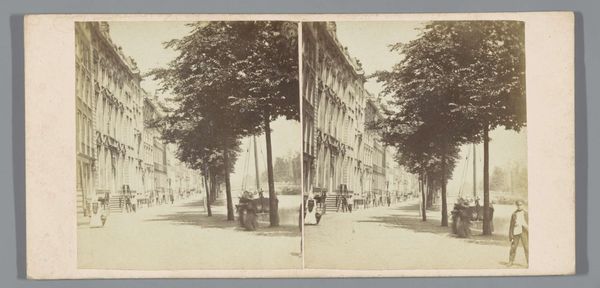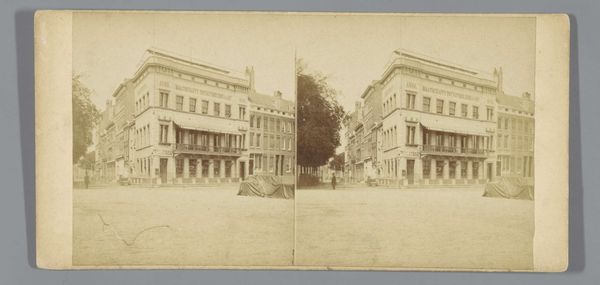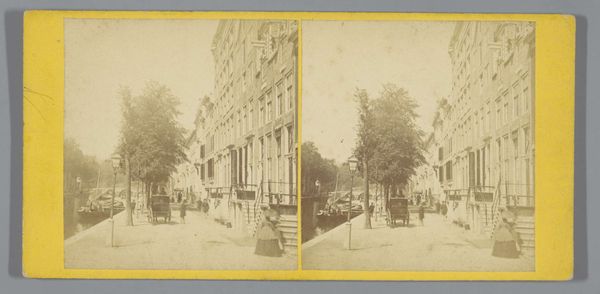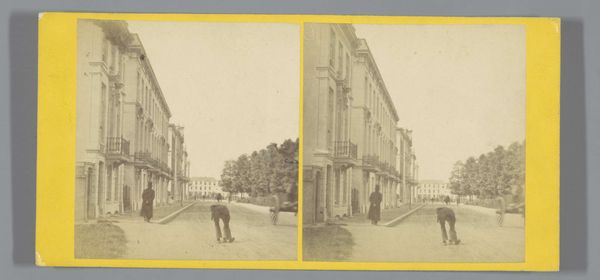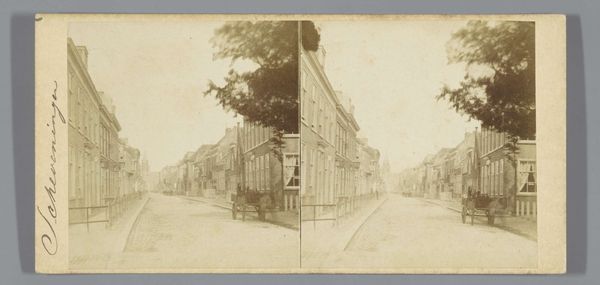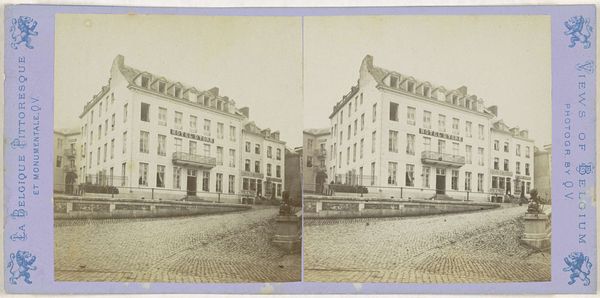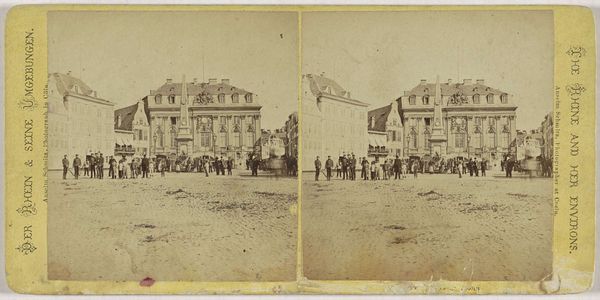
Mannen voor Hotel Blinzler aan de Kurfürstenallee, Bad Godesberg 1855 - 1875
0:00
0:00
photography
#
photography
#
cityscape
#
realism
Dimensions: height 85 mm, width 172 mm
Copyright: Rijks Museum: Open Domain
Editor: This is "Mannen voor Hotel Blinzler aan de Kurfürstenallee, Bad Godesberg" a photograph by Theodor Creifelds taken sometime between 1855 and 1875. I'm struck by how… ordinary it feels. Just a street scene, but preserved in such detail. What can you tell me about this kind of everyday depiction? Curator: It's a slice of life, isn't it? What's interesting here is thinking about the rise of photography as a means of documenting and constructing social realities. These images weren't just passive recordings; they were actively shaping how people understood their world. Editor: Shaping how? In what way? Curator: Well, consider the Kurfürstenallee itself. As a new, planned street, how does depicting it as bustling and modern affect our perception of the town and the social life within it? And what social classes are being represented – who are these people and what do their clothes signify? Editor: I guess it’s not exactly a democratic view, focusing on what appears to be the middle class out for a stroll. I suppose that would be by design, promoting the lifestyle that this new setting offers. Curator: Exactly! And think about the role of the photographer. Creifelds isn't just showing us a street; he’s participating in creating and reflecting a specific vision of urban life. Do you think there is value in him choosing that viewpoint? Editor: I think so! This reminds me to consider art as more than pretty pictures. The photo serves as a historical document reflecting how societal values influence art production. Curator: Precisely! The photograph then is not just about the street scene; it's about the culture that produced it, and the cultural narratives that it, in turn, reinforces.
Comments
No comments
Be the first to comment and join the conversation on the ultimate creative platform.
